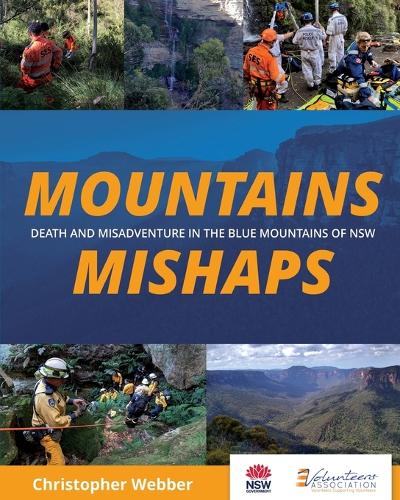Description
Every year in the Blue Mountains, up to 400 visitors get lost or need rescuing, with many spending an unexpected night in the bush. Most incidents happen in the same locations, within a few kilometres of civilisation. Readers will not only enjoy some gripping adventures, but also learn how to enjoy their trip in the Blue Mountains to the maximum. The over 620 episodes cover from the 1860s to the present day. Most people survived, but there were over 240 untimely deaths. There are in excess of 200 colour photographs and many maps. For the first time, all the Blue Mountains canyons are mapped together, and all the storms and snowfalls are catalogued.
The Blue Mountains National Park has the highest visitation of any National Park in Australia, more than 4 million visitors per annum. In the Blue Mountains, the numbers are uncertain, as only about 20% of incidents are reported to the public. Through Freedom of Information requests and interviews with local people, this book aims to help break the silence. Between 2004 and 2007 nearly 400 people were reported missing in the Blue Mountains and surrounding area, which led to 200 search and rescue operations.
These incidents may have a wide effect on the local community and tourist industry. Up to nine organisations may be involved searching for a single man. For example, one 2013 search involved 1,000 people and lasted four weeks. Another search resulted in a miraculous survival and payment of $200,000 to the survivor, who suffered permanent injuries. One man survived an air crash and a week of freezing temperatures without food in some of the most rugged terrain to found his own airline. A couple got lost in the same place twice in the same weekend, and had to be rescued each time. Another man tried to cross the rugged, 150 km wide Wollemi National park with only some potatoes and naan bread in his back pack. 99% of missing persons are found, but there are several mysterious disappearances.
The book has a chapter for each cause of injury or death - 12 in all, plus a Preface, Introduction, and four appendices. Each chapter starts with some personal stories, followed by a description of the hazard, and instructions on how to avoid it. This is followed by other stories arranged in chronological and geographical order.
The focus of the book is on incidents that occur in the bush, but there are some of the more remarkable incidents on the roads, in the air, and on the railways, too. There have been 40 air crashes, for instance. Readers will learn of the incidence of snow, storms, floods, landslides, and tremors. There is also a local history of the geology, railways and the local emergency services. The heroism and selfless dedication of both professional and volunteer rescuers is highlighted. Blue Mountains rescuers have received many awards for their bravery.
This is an important and unique book, featuring prize-winning research, which anybody with an interest in in emergency situations, cars, trains, planes, canyoning, bushwalking, mountain biking, swimming, liloing, rock climbing, and other outdoor activities should read. It could save your life, or at least save you from an embarrassing night in the bush. This book will tell you where to go, what to take, and when. This is a non-academic study that can easily be read in small stages.
This book is sponsored by the NSW Government through Create NSW and by the State Emergency Services Volunteers Association.






